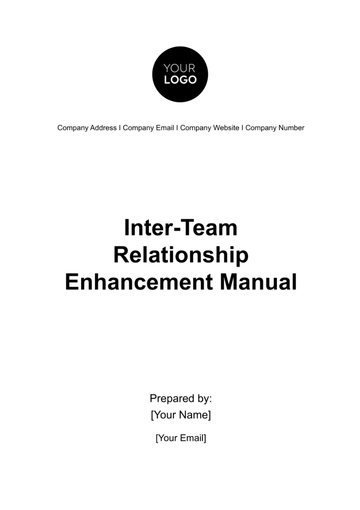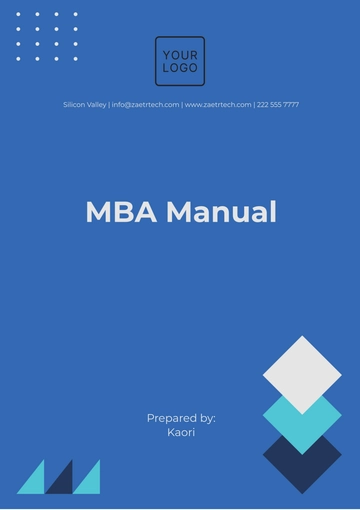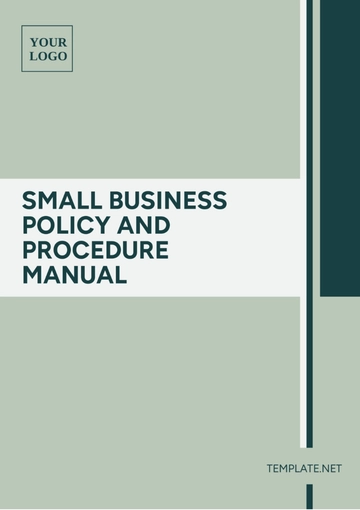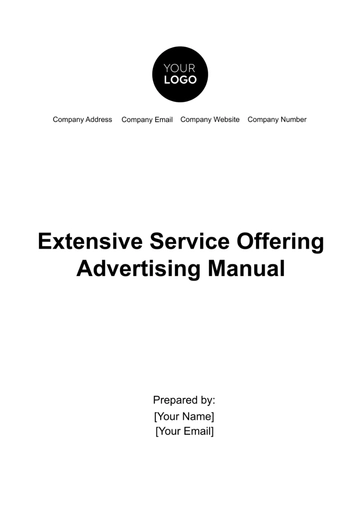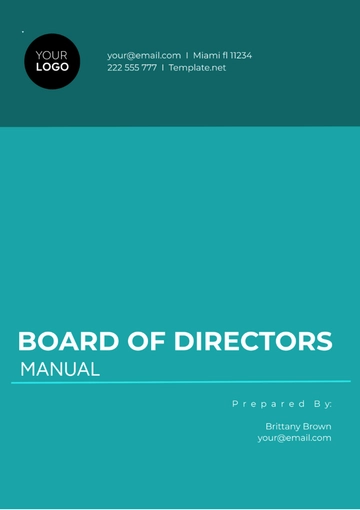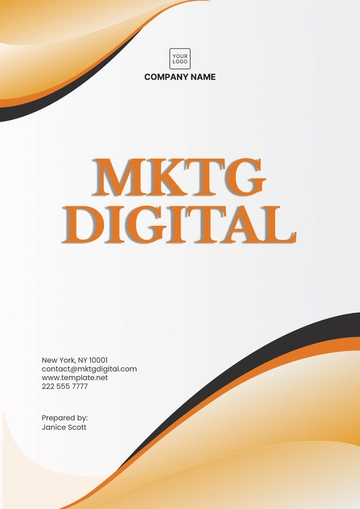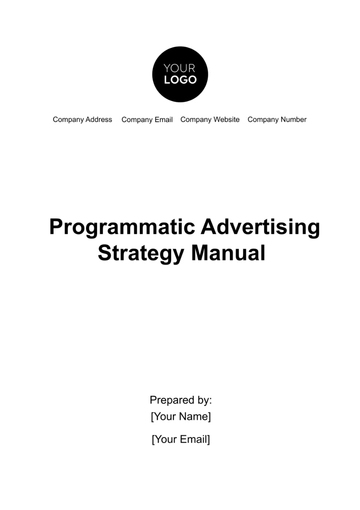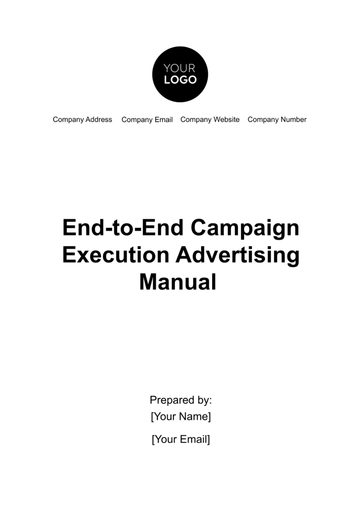Free Advertising Expenditure Manual

I. Introduction
Welcome to the [Your Company Name] Advertising Expenditure Manual. This document serves as a comprehensive guide for planning, tracking, and evaluating the advertising expenditures of [Your Company Name]. The practices outlined here are designed to ensure the optimal allocation of resources towards effective advertising strategies, aligning with our company’s overall marketing objectives and ethical standards.
II. Advertising Budget Overview
The advertising budget at [Your Company Name] is a critical component in steering our advertising efforts toward achieving the company's strategic marketing goals. It is designed to allocate resources effectively across various advertising channels while ensuring alignment with our overarching business objectives. Our budgeting process involves a collaborative approach, balancing creative aspirations with financial prudence to maximize the impact of every dollar spent.
A. Budget Allocation Principles
Alignment with Marketing Goals
Every advertising expenditure is closely aligned with our marketing goals, ensuring that each campaign directly contributes to our broader marketing objectives, such as brand awareness, market penetration, or customer retention. This principle mandates a deep understanding of our market and customer base, enabling targeted and effective advertising strategies. It emphasizes the importance of advertising efforts that are not just creative but also strategically focused.
Flexibility and Responsiveness
Our budgeting process is dynamic, allowing for flexibility and quick responsiveness to changing market conditions or consumer trends. This principle acknowledges the fast-paced nature of advertising and the need to adapt quickly to new opportunities or challenges. It ensures that our advertising strategies remain relevant and effective, even amid unpredicted market shifts.
Cost-effectiveness and ROI Maximization
We prioritize cost-effectiveness and ROI maximization in our budgeting decisions, aiming to achieve the highest possible return on every advertising investment. This principle involves rigorous analysis of past campaigns, market trends, and consumer behavior to identify the most efficient use of resources. It underscores the importance of making data-driven decisions to optimize the impact of our advertising budget.
B. Annual Budget Planning
Process
The annual budget planning process for advertising begins in the fourth quarter of the preceding year, allowing us to plan and allocate resources for the upcoming year strategically. This process includes reviewing the current year's performance, forecasting market trends, and setting goals for the next year. It ensures a proactive approach to budgeting, leaving ample time for thorough analysis and strategic planning.
Stakeholders
The development of the advertising budget is a collaborative effort involving key stakeholders, including the Marketing Department, Finance Department, and Executive Management. This cross-functional collaboration ensures that the budget is realistic, aligns with company-wide financial goals, and has the backing of top management. The involvement of these departments fosters a holistic view of the company's objectives and financial health.
III. Advertising Channels
In this rapidly evolving advertising landscape, [Your Company Name] utilizes a mix of digital, traditional, and outdoor advertising channels to reach and engage our target audience effectively. Each channel offers unique advantages and requires distinct strategies for budget allocation and campaign execution. Our approach in selecting and investing in these channels is driven by data and insights, ensuring maximum reach and impact of our advertising efforts.
A. Digital Marketing
Platforms
Digital marketing at [Your Company Name] encompasses various online platforms, including Social Media, Search Engines, and Display Networks. These platforms are pivotal in driving online engagement and conversions. They offer targeted advertising capabilities, allowing us to reach specific audience segments with personalized messages.
Budget Allocation
Here's the budget percentage for each platform:
Platform | Percentage of Budget | Description |
Social Media | 40% | Focus on platforms like Facebook, Instagram, LinkedIn for targeted campaigns. |
Search Engines | 30% | Investment in SEO and SEM on Google, Bing for increased visibility. |
Display Networks | 30% | Use of Google Display Network and affiliate websites for broader reach. |
B. Traditional Media
Platforms
Despite the rise of digital media, traditional platforms like Television, Radio, and Print Media remain integral to our advertising strategy. These channels are particularly effective for reaching broader audiences and building brand awareness.
Budget Allocation
The table below showcases the budget allocation in the context of traditional media:
Platform | Percentage of Budget | Description |
Television | 50% | Investment in prime-time ads for maximum reach. |
Radio | 30% | Targeted radio spots in key markets. |
Print Media | 20% | Use of newspapers and magazines for niche targeting. |
C. Outdoor Advertising
Platforms
Outdoor advertising, encompassing Billboards, Transit Ads, and Posters, offers high-visibility and geographically targeted options to reinforce our advertising messages. These platforms are effective for creating a brand presence in specific locales and driving local engagement.
Budget Allocation
Presented below is the allocated percentage for each platform:
Platform | Percentage of Budget | Description |
Billboards | 50% | Strategically located for maximum visibility. |
Transit Ads | 30% | Ads in buses, trains, and subways for urban reach. |
Posters | 20% | Localized posters in high-footfall areas. |
Each of these advertising channels is chosen and budgeted for based on their ability to meet our specific marketing objectives and their effectiveness in reaching our desired audience. The allocation percentages are reflective of our strategic priorities and are subject to annual review based on market trends and campaign performance data.
IV. Expenditure Tracking and Reporting
Efficient tracking and reporting of advertising expenditures are vital for maintaining fiscal discipline and assessing the effectiveness of advertising campaigns. [Your Company Name] employs a robust system and standardized reporting formats to ensure transparency, accountability, and informed decision-making. This section outlines our expenditure tracking system and the protocols for reporting.
A. Expenditure Tracking System
Tool: [Your Company’s Expenditure Tracking Software]
[Your Company Name] utilizes a specialized Expenditure Tracking Software designed to monitor and manage advertising expenditures. This tool is a cornerstone of our financial management strategy, ensuring that all advertising spends are tracked accurately and efficiently.
Features
2.1. Real-time Tracking: This feature allows for the monitoring of expenditures as they occur, providing an up-to-date view of financial commitments and remaining budgets. It enables immediate identification of discrepancies and overspending, allowing prompt corrective actions.
2.2. Automated Alerts: The system is configured to send automated alerts when expenditures approach predefined budget limits. These alerts ensure that budget overruns are prevented and necessary adjustments can be made promptly.
2.3. Custom Reporting: The software supports the creation of custom reports, allowing different departments to access tailored information relevant to their specific needs. This feature facilitates in-depth analysis and supports data-driven decision-making.
B. Reporting Format and Frequency
Monthly Reports
1.1. Due by the 5th of the following month: Monthly reports are due early in the subsequent month to provide a timely review of the previous month's expenditures. These reports include detailed breakdowns of spending by channel, campaign, and platform, offering insights into spending trends and effectiveness.
1.2. Content: Each report encompasses expenditure details, campaign performance metrics, and variance analysis against the budget. This regular reporting cycle ensures ongoing oversight and enables quick adjustments to the advertising strategy as needed.
Quarterly Summaries
2.1. Comprehensive Overview Including ROI Analysis: In addition to monthly reports, comprehensive quarterly summaries are prepared to provide a more extensive review of advertising activities. These summaries include a thorough ROI analysis, evaluating the effectiveness of advertising spending in achieving set marketing objectives.
2.2. Strategic Insights: The quarterly summaries are instrumental in providing strategic insights to the management, and informing future budget allocations and advertising strategies. They offer a holistic view of advertising performance over a longer period, allowing for better alignment with overall business goals.
Together, the Expenditure Tracking System and the structured reporting format ensure that [Your Company Name]'s advertising expenditures are managed effectively, aligned with our strategic goals, and optimized for maximum impact.
V. Evaluating Advertising Effectiveness
To gauge the success of our advertising campaigns and ensure optimal utilization of our advertising budget, [Your Company Name] employs a systematic approach to evaluating advertising effectiveness. This evaluation is based on Key Performance Indicators (KPIs) and a rigorous Return on Investment (ROI) analysis. These metrics not only measure performance but also provide insights for future strategy formulation.
A. Key Performance Indicators
Key Performance Indicators are essential metrics used to assess the effectiveness of our advertising campaigns. These KPIs are chosen for their direct correlation to our advertising objectives and overall marketing goals.
Conversion Rate
1.1. Definition: The conversion rate measures the percentage of users who take a desired action due to our advertising efforts. This action could be a purchase, a sign-up, or a predefined goal.
1.2. Importance: This KPI is crucial for understanding the effectiveness of our advertising in driving tangible results, and it helps fine-tune our targeting and messaging strategies.
Cost Per Acquisition (CPA)
2.1. Definition: CPA calculates the cost incurred for each acquisition (e.g., new customer, sale) due to the advertising campaign.
2.2. Importance: This metric is key in evaluating the financial efficiency of our advertising efforts and is instrumental in budget allocation decisions.
Brand Awareness Metrics
3.1. Definition: This encompasses various metrics such as brand recall, brand recognition, and audience growth rate, which measure the impact of our advertising on brand awareness.
3.2. Importance: These metrics help in assessing the broader, long-term effects of our advertising on brand perception and market presence.
B. Return on Investment Analysis
Methodology: Standard ROI Calculation Model
1.1. This model considers the total costs of advertising campaigns against the revenues or value generated from these campaigns.
1.2. The ROI calculation involves assessing direct revenue generation and the intangible benefits like increased brand awareness or market share.
Frequency: Quarterly and Annually
2.1. Quarterly Analysis: Conducted at the end of each quarter, this analysis provides insights into the short-term effectiveness of our advertising campaigns. It aids in making prompt adjustments to strategies as needed.
2.2. Annual Analysis: The annual ROI analysis offers a comprehensive overview of the advertising effectiveness over the year. It plays a crucial role in strategic planning for the upcoming year, allowing for a long-term perspective on advertising performance.
By systematically evaluating these KPIs and conducting regular ROI analyses, [Your Company Name] ensures that our advertising strategies are not only creative and engaging but also effective and efficient in terms of meeting our business objectives.
VI. Regulatory Compliance and Ethical Standards
At [Your Company Name], we recognize the critical importance of adhering to regulatory compliance and upholding high ethical standards in all our advertising activities. Our commitment to these principles is not just a legal obligation but a core aspect of our corporate responsibility and brand identity. This section of the manual delineates our approach to ensuring that all advertising content and campaigns comply with applicable laws, regulations, and ethical norms.
Compliance with legal regulations is fundamental to our operations. We rigorously monitor and adhere to all local, national, and international advertising laws and guidelines. This includes respecting intellectual property rights, avoiding false or misleading claims, and ensuring transparency in consumer communications. Our legal team regularly updates the company on changes in advertising laws and conducts training sessions for relevant staff to ensure ongoing compliance.
Ethical advertising goes beyond mere legal compliance. It involves a commitment to honesty, integrity, and social responsibility in our advertising messages. This means avoiding stereotypes, promoting inclusivity, and being sensitive to cultural and social contexts. We understand that ethical advertising not only protects our company from legal risks but also builds trust with our customers and enhances our brand reputation.
To ensure adherence to these standards, [Your Company Name] has established a review process for all advertising materials. This process involves multiple checkpoints - from concept development to final execution - to ensure that all content aligns with our ethical guidelines and regulatory requirements. In case of any uncertainty or potential ethical dilemmas, our ethics committee is consulted to provide guidance.
In summary, maintaining regulatory compliance and ethical standards in advertising is a top priority for [Your Company Name]. We believe that this commitment not only safeguards our company but also contributes positively to the broader community and market in which we operate. Our approach is about doing the right thing, not just the legally required thing, and it is integral to how we conduct our business and execute our advertising strategies.
VII. Revision and Approval Process
The advertising strategies and expenditure plans of [Your Company Name] are dynamic, necessitating a structured process for regular revisions and approvals. This process ensures that our advertising approaches remain current, effective, and aligned with our evolving business objectives and market conditions. The following outlines the frequency of revisions and the approval hierarchy involved in this process.
A. Frequency of Revisions
Annually: The advertising strategies and budgets are revised annually as a standard practice. This annual revision considers the performance of past campaigns, changes in market trends, and the company's evolving strategic goals. It's an opportunity to recalibrate our advertising efforts to ensure they effectively contribute to the company's overall objectives.
As Needed: In addition to the annual revision, revisions can occur throughout the year. Significant market changes, new business opportunities, shifts in consumer behavior, or changes in the competitive landscape trigger these ad-hoc revisions. This flexibility ensures that our advertising strategies remain agile and responsive to external factors.
B. Approval Hierarchy
The revision and approval process follows a hierarchical structure to ensure that decisions are made with due diligence and are aligned with the company's strategic direction.
Approval Level | Role/Title | Responsibilities and Focus Areas |
First Level | Marketing Manager |
|
Second Level | Chief Financial Officer (CFO) |
|
Final Level | Chief Executive Officer (CEO) |
|
This document is intended for internal use by [Your Company Name] employees and authorized partners only. Unauthorized distribution or use is prohibited.
- 100% Customizable, free editor
- Access 1 Million+ Templates, photo’s & graphics
- Download or share as a template
- Click and replace photos, graphics, text, backgrounds
- Resize, crop, AI write & more
- Access advanced editor
Understand your advertising expenditures in just a few easy clicks with our adaptable Advertising Expenditure Manual Template! This customizable manual from Template.net is editable, allowing you to create a detailed guide that helps your team understand advertising expenditures. The AI Editor Tool simplifies the editing process! Try it out immediately!
